
Leptis Magna: The Jewel of Ancient Rome in Libya
Discover Leptis Magna, Libya's hidden gem and one of the best-preserved Roman cities in the Mediterranean, offering an unparalleled glimpse into ancient history.
Leptis Magna, located on the coast of Libya, is one of the best-preserved Roman cities in the Mediterranean. Once a thriving metropolis, it was founded by the Phoenicians and later became an important part of the Roman Empire. The city boasts impressive ruins that offer a glimpse into its glorious past, making it a must-visit destination for history enthusiasts and curious travelers alike. Stroll through the ancient streets of Leptis Magna and marvel at the grandeur of the Severan Arch, a magnificent triumphal arch dedicated to Emperor Septimius Severus. The city's well-preserved theater, with its stunning backdrop of the Mediterranean Sea, provides a fascinating look at Roman entertainment and architecture. The Hadrianic Baths, another highlight, showcase the advanced engineering and luxurious lifestyle of the Romans. The extraordinary remains of the marketplace, basilica, and residential quarters reveal the daily life of the city's inhabitants. As you explore the ruins, you'll be transported back in time, imagining the bustling activity that once filled these ancient streets. The site's remote location has helped preserve its authenticity, offering an unparalleled experience for those willing to venture off the beaten path.
Local tips in Leptis Magna
- Visit during the cooler months of October to April to avoid the extreme summer heat.
- Hire a local guide to gain deeper insights into the history and significance of the ruins.
- Wear comfortable walking shoes as the site covers a large area with uneven terrain.
- Bring plenty of water and sunscreen, as there are limited facilities on-site.
- Check the local political situation before planning your visit, as safety can vary.
Leptis Magna: The Jewel of Ancient Rome in Libya
Leptis Magna, located on the coast of Libya, is one of the best-preserved Roman cities in the Mediterranean. Once a thriving metropolis, it was founded by the Phoenicians and later became an important part of the Roman Empire. The city boasts impressive ruins that offer a glimpse into its glorious past, making it a must-visit destination for history enthusiasts and curious travelers alike. Stroll through the ancient streets of Leptis Magna and marvel at the grandeur of the Severan Arch, a magnificent triumphal arch dedicated to Emperor Septimius Severus. The city's well-preserved theater, with its stunning backdrop of the Mediterranean Sea, provides a fascinating look at Roman entertainment and architecture. The Hadrianic Baths, another highlight, showcase the advanced engineering and luxurious lifestyle of the Romans. The extraordinary remains of the marketplace, basilica, and residential quarters reveal the daily life of the city's inhabitants. As you explore the ruins, you'll be transported back in time, imagining the bustling activity that once filled these ancient streets. The site's remote location has helped preserve its authenticity, offering an unparalleled experience for those willing to venture off the beaten path.
When is the best time to go to Leptis Magna?
Iconic landmarks you can’t miss
Leptis Magna Museum
Explore the rich history of Leptis Magna at its archaeological museum, showcasing ancient Roman artifacts and the grandeur of a lost civilization.

The Amphitheatre of Leptis Magna
Discover the ancient marvels of Leptis Magna, an exquisite historical landmark showcasing the splendor of Roman architecture on the Libyan coast.

Hadrianic Baths
Explore the grandeur of Hadrianic Baths in Leptis Magna, a remarkable historical landmark showcasing ancient Roman architecture and culture.

Severan Basilica
Discover the Severan Basilica in Leptis Magna, a stunning Roman landmark showcasing the architectural brilliance of the ancient world.

Severan Forum
Discover the Severan Forum, an ancient Roman landmark in Leptis Magna, showcasing architectural brilliance and rich history at every turn.

Old Basilica
Explore the Old Basilica in Leptis Magna, a stunning historical landmark showcasing the grandeur of Roman architecture and rich cultural heritage.

Temple of Jupiter
Explore the Temple of Jupiter in Leptis Magna, a stunning historical landmark showcasing the grandeur of ancient Roman architecture and culture.

Arch of Tiberius
Discover the impressive Arch of Tiberius in Leptis Magna, a symbol of Roman architectural brilliance and a must-visit historical landmark.

Arch of Septimius Severus
Explore the Arch of Septimius Severus in Leptis Magna, a stunning historical site that embodies the grandeur of Roman architecture and history.

Byzantine Gate
Explore the Byzantine Gate in Leptis Magna, a stunning historical landmark showcasing ancient Roman architecture and rich cultural heritage.

Leptis Tower برج لبدة
Discover the majestic Leptis Tower, a historical landmark showcasing the brilliance of ancient Roman architecture in the heart of Libya.

البوابة الغربية
Explore Al-Bawaba Al-Gharbiya, a historical landmark in Khoms offering stunning views and rich cultural heritage in the heart of Libya.

Hercules Temple
Explore the ancient Hercules Temple in Khoms, a historical landmark that showcases Roman architectural splendor and rich cultural heritage.

Lighthouse of Leptis Magna
Explore the Lighthouse of Leptis Magna, a historical gem on the Libyan coast that offers breathtaking views and a journey into ancient Roman history.

The Nymphaeum
Explore the Nymphaeum, an exquisite Roman fountain in Leptis Magna, showcasing stunning architecture and a rich historical narrative in a serene setting.

Unmissable attractions to see
Masallatah Center
Explore the enchanting Masallatah Center, a lush garden oasis in Libya offering tranquility, beauty, and cultural experiences for all travelers.

Severan Forum
Explore the Severan Forum in Leptis Magna, a remarkable historical landmark showcasing ancient Roman architecture and rich cultural heritage.
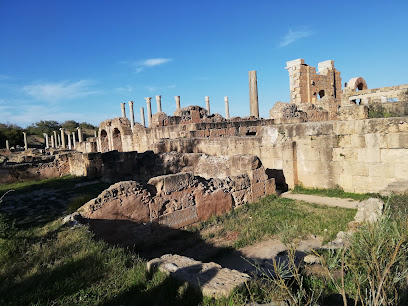
Arch of Septimius Severus
Explore the grandeur of the Arch of Septimius Severus in Leptis Magna, a stunning testament to Roman architectural mastery and historical significance.

Byzantine Gate
Discover the grandeur of the Byzantine Gate in Leptis Magna, a historical landmark that unveils the rich heritage of ancient Roman architecture.

Hercules Temple
Explore the majestic ruins of Hercules Temple in Khoms, a captivating historical landmark showcasing Roman architecture and rich ancient history.

Lighthouse of Leptis Magna
Discover the Lighthouse of Leptis Magna, a historical marvel that illuminates the rich heritage of ancient Roman civilization in Libya.
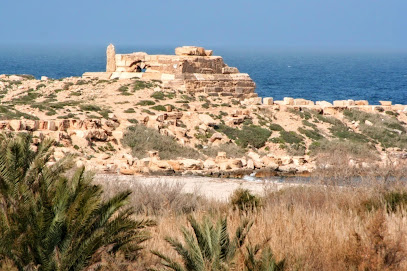
البوابة الغربية
Explore البوابة الغربية, a stunning historical landmark in Khoms, Libya, rich with culture, beauty, and architectural marvels from the past.

The Nymphaeum
Explore the Nymphaeum of Leptis Magna, a breathtaking historical landmark showcasing ancient Roman architecture and rich cultural heritage.

Circus Maximus of Leptis Magna
Discover the grandeur of ancient Rome at the Circus Maximus of Leptis Magna, a stunning historical landmark steeped in rich cultural heritage.

The ancient dam and wall of Leptis Magna
Explore the ancient dam and wall of Leptis Magna, a stunning historical landmark showcasing Roman engineering and rich history in Libya.

Leptis Magna Roman Ruin
Explore Leptis Magna, one of the best-preserved Roman ruins, and immerse yourself in the history of an ancient civilization on Libya's stunning coast.

Colonnaded Street
Explore the Colonnaded Street in Leptis Magna, a stunning historical landmark showcasing the grandeur of Roman architecture and urban planning.

Essential places to dine
Engaza mountains Restaurant النقازة
Discover authentic Libyan cuisine at Engaza Mountains Restaurant, where breathtaking views meet delicious flavors in Ghneema.

مطعم نابولي
Experience authentic Italian cuisine at مطعم نابولي in Khoms - where every dish tells a delicious story.

Blue Restaurant
Discover the flavors of Libya at Blue Restaurant in Khoms, where traditional dishes meet warm hospitality and stunning coastal views.

مطعم الفرن للوجبات
Experience authentic Libyan cuisine at مطعم الفرن للوجبات in Khoms – where every dish tells a story.

مطعم الكسوف للمشاوي و الأكلات البحرية
Experience authentic Libyan flavors at مطعم الكسوف للمشاوي و الأكلات البحرية in Khoms—where grilled meats meet fresh seafood in a vibrant atmosphere.

Annaja restaurant For popular foods
Discover authentic local cuisine at Annaja Restaurant in غنيمة, where every dish tells a story of tradition and flavor.

مطعم الشام
Experience authentic Middle Eastern cuisine at مطعم الشام in Khoms – where flavor meets tradition in a warm and inviting atmosphere.
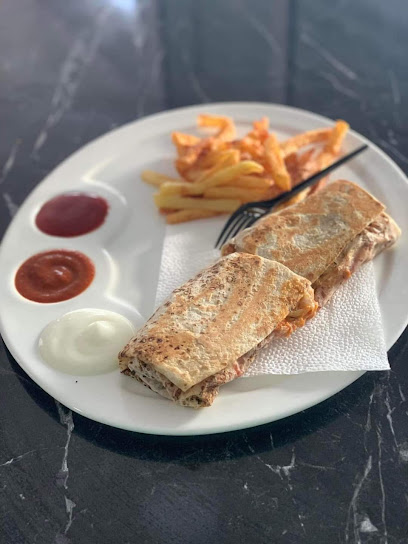
Pizza napoli
Experience the taste of Italy at Pizza Napoli in Khoms – where every slice is crafted with passion and tradition.

مطعم الشلبة
Indulge in authentic Libyan flavors at مطعم الشلبة in Khoms – a culinary experience that embodies local culture and hospitality.

كسكروت Cascrot
Discover the authentic flavors of Libya at Cascrot in Khoms - a delightful restaurant offering traditional dishes and warm hospitality.

مطعم الأفندي
Discover authentic Libyan fast food at مطعم الأفندي in Khoms – where tradition meets flavor in every bite.

مطعم البوادي
Discover authentic local flavors at مطعم البوادي in لمقريف - where every dish tells a story.

مطعم ماكس
Experience authentic Libyan cuisine at مطعم ماكس in Khoms, where delicious flavors meet warm hospitality.

عصبان النخلة
Discover authentic Libyan flavors at عصبان النخلة in Khoms - where every dish tells a story.

مطعم و استراحة القرية
Experience authentic Libyan flavors at مطعم و استراحة القرية in غنيمة - where tradition meets taste.
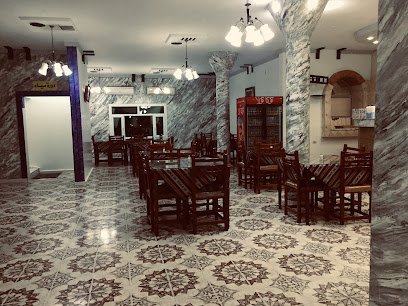
Markets, malls and hidden boutiques
سوق المهاري
Discover the heart of Khoms at سوق المهاري, where fresh produce and local flavors come together in a vibrant market atmosphere.

فلامينقو للهدايا
Explore Flamingo Gift Shop in Leptis Magna for unique Libyan gifts and souvenirs that celebrate the region's rich cultural heritage.

مركز ماكسي داس
Discover modern technology at مركز ماكسي داس, an electronics store in Leptis Magna offering a variety of gadgets amidst ancient ruins.

To7fa Gifts Shop
Discover unique Libyan souvenirs at To7fa Gifts Shop in Khoms, where local craftsmanship meets unforgettable memories.

حريبش للمواد الكهرومنزلية
Explore the best of electronics at حريبش للمواد الكهرومنزلية in Khoms, where quality meets exceptional service in a vibrant setting.

دلعها لكماليات السيارات
Explore دلعها لكماليات السيارات in Khoms for a unique selection of car accessories that reflect local automotive culture and craftsmanship.

أوصيلة للسجائر
Discover local flavors and essentials at أوصيلة للسجائر, a vibrant supermarket in historic Leptis Magna.

محل إكتيبي للأجهزة الألكترونية/Mr.Robot
Explore cutting-edge electronics at Mr. Robot in Khoms - your one-stop shop for the latest gadgets and tech accessories.

أنتيكا لتغليف الهدايا
Explore a charming gift shop in Khoms offering unique handcrafted items and exceptional wrapping services, perfect for memorable souvenirs.

Magasin de souvenirs
Explore a vibrant souvenir store in Leptis Magna, offering handcrafted treasures and authentic local crafts that reflect the city's rich heritage.

مقهى لبدة الكبرى
Experience the perfect blend of history and hospitality at Maqha Lubda Al-Kubra, a charming coffee shop in the heart of Leptis Magna.

سوق لبده لابناء اوهيبه
Discover the essence of Khoms at سوق لبده لابناء اوهيبه, a vibrant market filled with local flavors and cultural treasures.

النبراس لمواد التنظيف
Discover quality cleaning supplies at Al-Nibras, a prime department store in the historic city of Leptis Magna, Libya, near stunning ancient ruins.

سوق لندن A & M plus
Discover cutting-edge technology and unbeatable deals at سوق لندن A & M plus, your premier electronics destination in Khoms.

مجموعة النبراس للخطروت والغدائيه
Discover local flavors and essential goods at مجموعة النبراس للخطروت والغدائيه in Leptis Magna, a supermarket that embodies Libyan culture and hospitality.

Essential bars & hidden hideouts
Leptis Magna
Discover the awe-inspiring ruins of Leptis Magna, a UNESCO World Heritage site showcasing the splendor of ancient Roman architecture and history.

مطعم الشام
Savor the authentic tastes of Middle Eastern cuisine at مطعم الشام, a must-visit restaurant in Khoms, renowned for its delicious dishes and welcoming atmosphere.
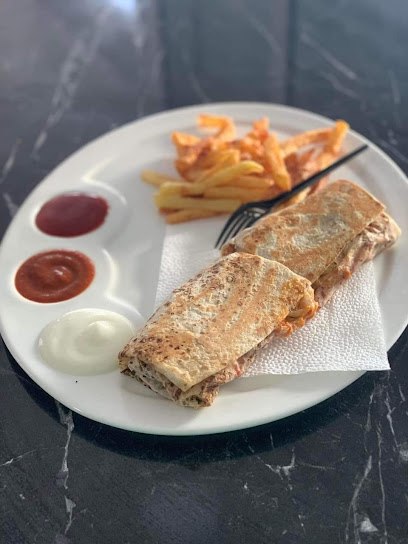
عصبان النخلة
Discover the authentic taste of Libya at عسبان النخلة in Khoms, where traditional flavors meet warm hospitality.

كباب كنيغ
Experience the authentic flavors of Libyan cuisine at Kebab King, Khoms' favorite spot for delicious kebabs and warm hospitality.

مقهى ومطعم لبدة
Experience authentic Libyan cuisine at مقهى ومطعم لبدة, a charming restaurant in the historic Leptis Magna, blending tradition and flavor.

مقهي العماد
Discover the authentic flavors of Libyan breakfast at مقهي العماد in Khoms, where every meal is a celebration of culture and taste.

محلات ابناء حسن الفاسي
Experience the charm of محلات ابناء حسن الفاسي, a cozy lounge in Msallata perfect for relaxation and enjoying local flavors.

مطعم يوسف نبة
Experience the vibrant atmosphere and local flavors at مطعم يوسف نبة, a top bar in Khoms, perfect for socializing and relaxation.

مطعم آثار لبدة
Discover the flavors of Libya at مطعم آثار لبدة, a family-friendly restaurant in the heart of historic Leptis Magna.

براكة عمي صالح
Experience the vibrant atmosphere and local culture at براكة عمي صالح, Tarhunah's lively bar offering authentic Libyan hospitality.

صالة المنساز
Experience the charm of صالة المنساز in سوق الخميس/ الخمس, where shopping and relaxation blend in a vibrant atmosphere.

Piccola / مقهي بيكولا
Experience the vibrant fast food scene at Piccola in Khoms, where delicious flavors meet a casual dining atmosphere for every traveler.

Pizza kayan
Experience the best pizza in Leptis Magna, where ancient history meets delightful flavors and fresh ingredients.

الكبيتانو
Discover the authentic taste of Libya at الكبيتانو, a culinary gem in Khoms, offering traditional dishes that celebrate local flavors.

مقهى سفلي م
Discover the authentic flavors of Libya at Sufli Café in Khoms, where every dish tells a story of rich culinary traditions and local culture.

Local Phrases
-
- Helloمرحبا
[marhaba] - Goodbyeوداعا
[wadaea] - Yesنعم
[naam] - Noلا
[laa] - Please/You're welcomeمن فضلك
[min fadlik] - Thank youشكرا
[shukran] - Excuse me/Sorryعذرا
[athara] - How are you?كيف حالك؟
[kayfa halak?] - Fine. And you?بخير. وأنت؟
[bikhayr. wa'ant?] - Do you speak English?هل تتحدث الإنجليزية؟
[hal tatahadath al-ingliziya?] - I don't understandأنا لا أفهم
[ana la afham]
- Helloمرحبا
-
- I'd like to see the menu, pleaseأريد رؤية القائمة، من فضلك
[uriid ru'yah alqaimah, min fadlik] - I don't eat meatأنا لا آكل اللحم
[ana la aakul allahm] - Cheers!في صحتك!
[fi sahtak!] - I would like to pay, pleaseأريد أن أدفع، من فضلك
[uriid 'an 'udfa', min fadlik]
- I'd like to see the menu, pleaseأريد رؤية القائمة، من فضلك
-
- Help!النجدة!
[alnajdah!] - Go away!انصرف!
[ansarf!] - Call the Police!اتصل بالشرطة!
[atsil bialshurtah!] - Call a doctor!اتصل بالطبيب!
[atsil bialtabib!] - I'm lostلقد ضللت الطريق
[laqad dalalt altariq] - I'm illأنا مريض
[ana mareed]
- Help!النجدة!
-
- I'd like to buy...أريد شراء...
[uriid shira...] - I'm just lookingأنا فقط أتطلع
[ana faqat atatalla] - How much is it?كم هو ثمنه؟
[kam huwa thamanuh?] - That's too expensiveهذا غالي جدا
[hatha ghali jiddan] - Can you lower the price?هل يمكنك خفض السعر؟
[hal yumkinuk khafd als'ar?]
- I'd like to buy...أريد شراء...
-
- What time is it?كم الساعة؟
[kam alssa'ah?] - It's one o'clockالساعة الواحدة
[alssa'ah alwahidah] - Half past (10)النصف بعد العاشرة
[alnusf baed alaashirah] - Morningالصباح
[alsaabah] - Afternoonالمساء
[almasa] - Eveningالمساء
[almasa] - Yesterdayالبارحة
[albarihah] - Todayاليوم
[alyawm] - Tomorrowغدا
[ghadan] - 1واحد
[wahid] - 2اثنان
[ithnan] - 3ثلاثة
[thalathah] - 4أربعة
[arba'ah] - 5خمسة
[khamsah] - 6ستة
[sitah] - 7سبعة
[sab'ah] - 8ثمانية
[thamaniah] - 9تسعة
[tis'ah] - 10عشرة
[asharah]
- What time is it?كم الساعة؟
-
- Where's a/the...?أين ال...؟
[ayn al...?] - What's the address?ما هو العنوان؟
[ma huwa al'anaan?] - Can you show me (on the map)?هل يمكنك أن تريني (على الخريطة)؟
[hal yumkinuk 'an tureeni (ala alkharitah)?] - When's the next (bus)?متى يأتي الحافلة التالية؟
[mata yaati alhafilah altaliyah?] - A ticket (to ....)تذكرة (إلى ....)
[tadhkirah (ila ....)]
- Where's a/the...?أين ال...؟
History of Leptis Magna
-
Leptis Magna, also known as Lepcis Magna, was founded by the Phoenicians in the 7th century BC. Its strategic location along the coast of North Africa made it an important trading hub. The city quickly grew in wealth and influence due to its access to Mediterranean trade routes and the fertile lands of the surrounding region.
-
In 146 BC, Leptis Magna was incorporated into the Roman Republic following the defeat of Carthage in the Third Punic War. Under Roman rule, the city underwent significant expansion. The construction of grand public buildings, roads, and harbors transformed Leptis Magna into one of the most prominent cities in the Roman Empire.
-
Leptis Magna reached its zenith during the reign of Emperor Septimius Severus, who was born in the city in 145 AD. Severus embarked on an ambitious building program that included the construction of the Severan Basilica, the Arch of Septimius Severus, and the renovation of the city's harbor. This period marked the golden age of Leptis Magna, characterized by prosperity and architectural grandeur.
-
The city began to experience economic decline in the 3rd century AD due to political instability and decreasing trade. In 455 AD, Leptis Magna was sacked by the Vandals, a Germanic tribe that had invaded North Africa. The city never fully recovered from this devastation, and its importance gradually waned.
-
In the 6th century AD, Leptis Magna was briefly revived under Byzantine rule. Emperor Justinian I ordered the restoration of several key structures, including the city's walls and public buildings. However, the resurgence was short-lived. By the 7th century AD, the city had fallen into disrepair and was largely abandoned following the Arab conquest of North Africa.
-
Leptis Magna remained buried and forgotten until the 20th century when Italian archaeologists began systematic excavations. The rediscovery of the city revealed its well-preserved ruins, including the amphitheater, forum, and baths, offering a glimpse into its illustrious past. Today, Leptis Magna is recognized as a UNESCO World Heritage Site and is considered one of the best-preserved Roman cities in the Mediterranean.
Leptis Magna Essentials
-
Leptis Magna is located near the modern city of Khoms (also spelled Al-Khums) in Libya. The nearest major international airport is Mitiga International Airport in Tripoli, approximately 130 kilometers away. From Tripoli, you can hire a taxi or rent a car to reach Leptis Magna. The drive takes around 1.5 to 2 hours via the coastal road. Alternatively, there are bus services that connect Tripoli and Khoms, but schedules can be irregular.
-
In Khoms, you can find taxis and local minibuses (known as 'shared taxis') that can take you to Leptis Magna. Hiring a private taxi is the most convenient option for tourists. Car rentals are also available in Tripoli for those who prefer to explore at their own pace. Walking around the archaeological site is feasible, but bring comfortable shoes as the area is extensive.
-
The official currency in Libya is the Libyan Dinar (LYD). Credit cards are not widely accepted, so it's advisable to carry sufficient cash. ATMs are available in Tripoli and Khoms, but it's best to withdraw enough cash before heading to Leptis Magna. Exchange some currency at the airport or in Tripoli before your visit.
-
Libya has experienced political instability in recent years, making it essential to stay informed about the current situation. Avoid traveling to areas with known conflict or high crime rates. Always consult travel advisories before planning your trip. In Khoms and Leptis Magna, petty crimes such as pickpocketing can occur, so keep an eye on your belongings. Avoid walking alone after dark and stay vigilant.
-
In case of emergency, the local emergency number in Libya is 193 for police, 120 for medical emergencies, and 190 for the fire department. It is highly recommended to have travel insurance that includes medical coverage. The nearest medical facility is in Khoms, but for serious conditions, you may need to travel to Tripoli. Keep a list of emergency contacts and local embassy numbers handy.
-
Fashion: Do dress modestly. Avoid wearing revealing clothing as a sign of respect for local customs. Religion: Do respect Islamic traditions. Avoid public displays of affection and be mindful of prayer times. Public Transport: Do be polite and respectful. Don't eat or drink on public transport. Greetings: Do greet people with a handshake, and use the right hand for giving and receiving items. Eating & Drinking: Do try local cuisine and accept food offerings graciously. Don't refuse hospitality, as it is considered impolite.
-
To experience Leptis Magna like a local, consider hiring a local guide who can provide in-depth historical context and anecdotes about the site. Visit early in the morning to avoid the heat and crowds. Engage with locals in Khoms; they are often friendly and willing to share stories about the history and culture of the area. Don't miss the local markets for fresh produce and traditional Libyan goods.
Trending Landmark in Leptis Magna
Nearby Cities to Leptis Magna
-
Things To Do in Zliten
-
Things To Do in Misrata
-
Things To Do in Tripoli
-
Things To Do in Sabratha
-
Things To Do in Djerba
-
Things To Do in Zurrieq
-
Things To Do in Mqabba
-
Things To Do in Marsaxlokk
-
Things To Do in Zejtun
-
Things To Do in Marsaskala
-
Things To Do in Tarxien
-
Things To Do in Paola
-
Things To Do in Rabat
-
Things To Do in Marsa
-
Things To Do in Mdina












